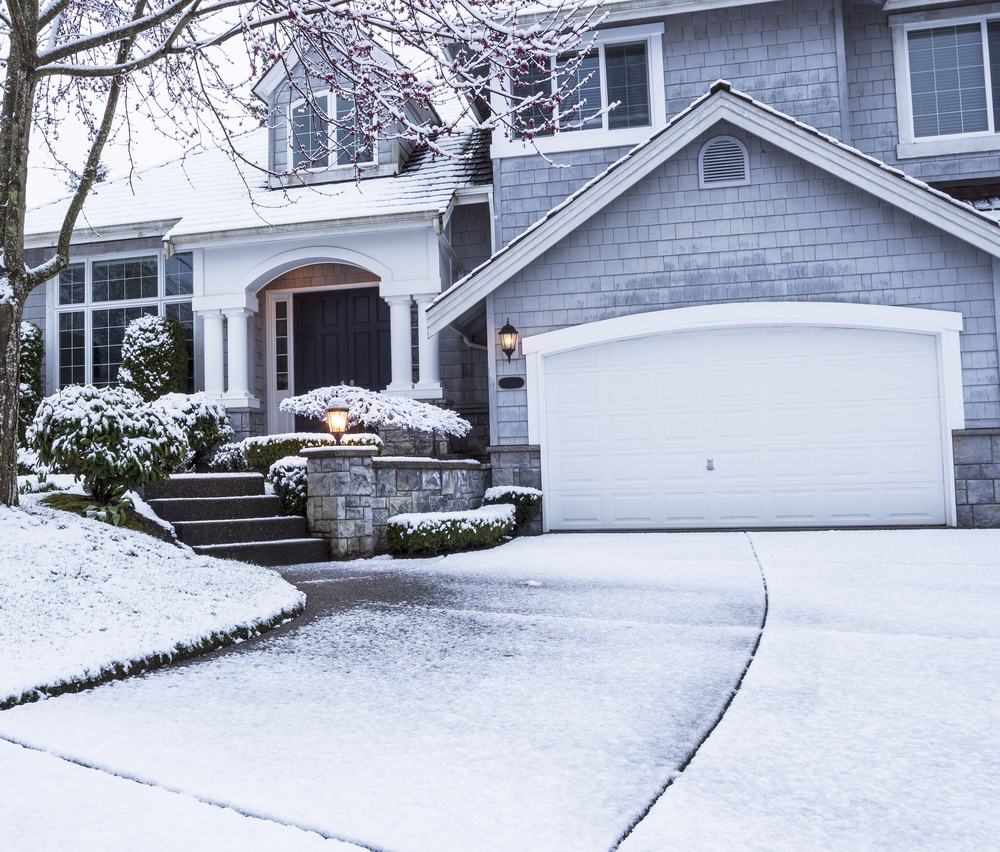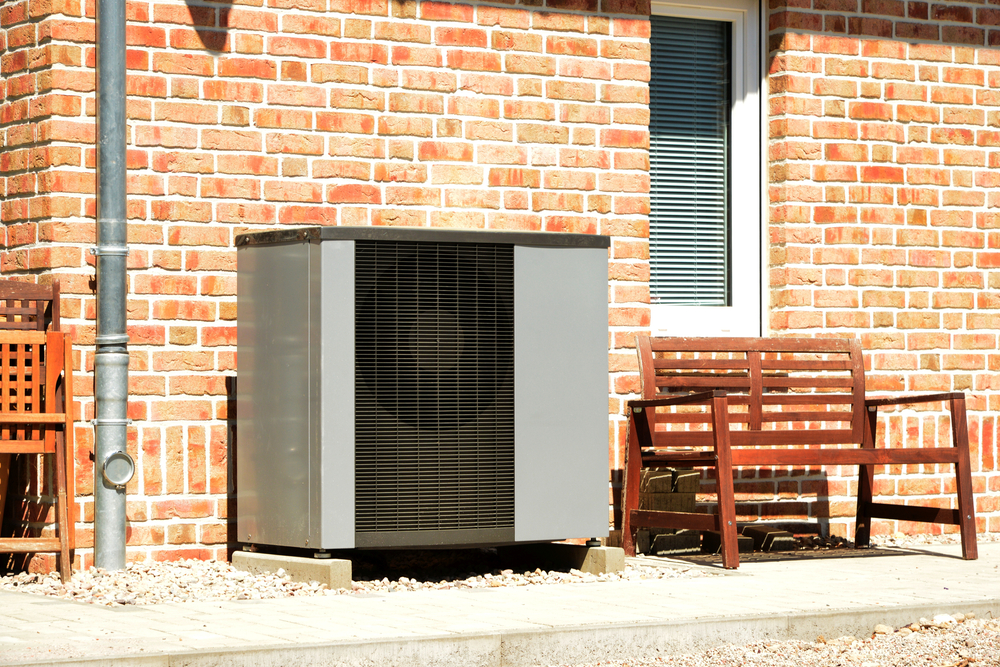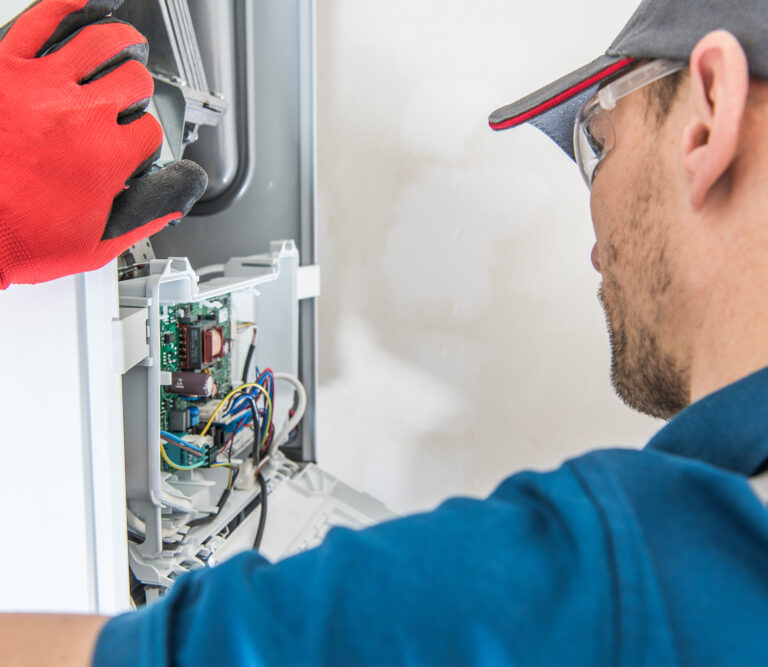Whether you’re building your dream home from the ground up or researching ways to enhance your existing house, temperature control is important. And unless you live somewhere like Key West, you’re going to need an efficient and effective heating system to survive those frigid winter months.
As you’ve probably learned by now, those energy-hungry wall or portable heaters aren’t the most cost-effective way to warm your home—think astronomical energy bills each season. Your best bet is to install a dedicated central heating system that covers the entire house, and the top two options are the heat pump and furnace.
But which is best? The answer depends on the climate where you live and the specifics of your home. In this article, we’ll discuss the differences between the two so you can get a clear idea of which system will work best for you.
Heat Pump vs. Furnace: What’s the Difference?
Before we start explaining the pros and cons, it’s worth obtaining a rudimentary understanding of how each system works.
What Is a Furnace?
A furnace is a powerful heating system that combusts a fuel source—typically propane, natural gas, or electricity—to generate heat. It then blasts the heat through a series of ducts to reach various air grills around your home.
The system, which is sometimes known as “ducted air heating,” works beautifully at evenly warming your entire home. A flue acts as an exhaust to ensure any noxious gases are safely expelled outside.
What Is a Heat Pump?
Rather than creating warmth, a heat pump draws hot air from outside and transfers it to the interior—a different thermodynamic principle altogether.
A series of pressurized refrigerant lines absorb exterior heat—usually from the air, but sometimes from the ground—into coolant, which is compressed to become significantly hotter. The system then pumps the hot coolant into the interior of your home and blows air over it to emit heat.
A Heat Pump Cools Your Home in Summer
When the mercury starts to soar as summer rolls around, a heat pump can perform the same function in reverse: it absorbs cold air into its coolant and transfers it inside.
If you invest in a furnace, you’ll need to fork out for a pricey air-conditioning system to cool your home in summer (assuming the climate warrants it, of course).
A heat pump, however, is typically sufficient to keep your home at a comfortable temperature during the warmer months. And its highly efficient nature—remember: it transfers rather than generates cold air—keeps energy costs to a minimum.
A Furnace Is Better in Colder Climates

Because the heat pump works by transferring hot air from the outside, it struggles to perform properly when it becomes bitterly cold. While a heat pump will extract some warmth from the outside air when the temperature dips below freezing, on the whole, the colder the climate, the less effectively it will operate.
A furnace, on the other hand, doesn’t care how cold it is outside. It burns through a steady supply of combustible fuel to keep your home toasty warm in even the most frigid winter mornings.
If you’re living in a southern state with relatively mild winters, then a heat pump will probably do the trick. But if you’re located in one of the colder mid-west or northern states, you’re going to need a furnace.
Take a look at this Climatic Zone Map from the Department of Energy. Zones 1-3 are okay with a heat pump, while 4-7 could use a furnace.
A Heat Pump Is Cheaper to Run
Generating heat requires a tremendous amount of energy, so you can expect your furnace to leave you with a lofty utility bill each winter.
But heat pumps don’t generate heat; instead, they transfer it from the outside. As the system only needs to move coolant between refrigeration lines, it consumes a modest amount of electricity and will save you money in the long run.
The exact difference in your annual utility bill is impossible to determine accurately, because it depends on numerous variables: the climate, local utility rates, the efficiency of your unit, and so on. But as a ballpark figure, a furnace—be it gas, electricity, or propane—might cost you a thousand bucks, give or take, to run for an entire winter. A heat pump will set you back about half of that —even less when cooling your home in summer.
Both systems should last one to two decades, so these annual energy savings add up to a significant sum.
A Furnace Is Quieter
It’s probably not going to be a deal breaker, but it’s worth mentioning that the heat pump is noisier than the furnace.
As a heat pump kicks the compressor on to circulate coolant around your home, it makes a series of soft, yet audible clunking sounds—not unlike your fridge when it cycles on. The noises may feel a tad disconcerting at first, but you’ll grow used to them with time.
Because a furnace is usually installed in a far-flung corner of the home—typically the basement, if you have one—you won’t hear a thing. Even if you stand right next to the central unit, the only notable noise is a soft whooshing sound.
A Heat Pump Takes Up Less Space

If space is a precious commodity in your place, a furnace might be unfeasible. As its combusting mechanism generates significant heat, building codes mandate a generous amount of clearance on each side to minimize the risk of house fires.
The precise clearance requirement varies from state to state—around 30 inches is the norm. As a result, you’ll need a substantial amount of space to squeeze in both a furnace and the regulated clearance, which is one reason why most folks install them in the basement.
The heat pump also requires clearance around the central unit, typically about 24 inches or so. However, as the unit is located outdoors—much like an AC—there’s usually sufficient space.
A Furnace Will Last a Little Bit Longer
Both options are relatively costly to install, so it’s worth factoring longevity into the equation.
Much like an air-conditioning unit, a heat pump should be good for around 15 years. After that, the coolant can start clogging up, and the refrigeration pipes may need replacing.
A furnace, on the other hand, only runs for a few months per year and has fewer mechanical parts. Therefore, the furnace suffers less from wear and tear, typically continuing to function correctly for 20 years or more.
Furnaces also require less maintenance, which helps offset the higher operating cost (but only to a modest degree).
Both Have Similar Installation Costs
While there’s always some variation, both the standard air-to-air heat pump and furnace (gas, propane, or electrical) require a similar financial outlay for installation. Budget around US$4,000 to $5,000 for either option, or significantly more for a highly-efficient model.
Because a heat pump serves to keep your home cool in summer, you won’t need to get a separate air-conditioning unit, saving you extra cash.
If you want to get a geothermal heat pump (which extracts warmth from the ground), the installation requires excavation work that sees costs skyrocket—expect to hand over $25,000 or so.
When sizing up installations, existing infrastructure can play a key role. For example, if you aren’t already hooked up to natural gas, then a gas-powered furnace (the most efficient type) won’t be financially viable. Likewise, some homes aren’t wired up to operate a heat pump system, making the option unfeasible.
Both Require Professional Installation
While we love encouraging you guys to embark on ambitious DIY projects, a furnace or heat pump installation isn’t something you should attempt.
The process requires hardwiring the system into your 120V mains electricity, and building codes dictate these gigs must be done by a licensed electrician or HVAC technician. Besides, the task is too complicated to attempt without years of on-the-job experience.
A professional HVAC enterprise will also measure the air volume in your home and factor in the climate to determine the most appropriate solution, including the ideal size. A heating system that’s too small will see you suffer through winter, while one that’s too big will have you paying extra on your utility bill.
Heat Pump vs. Furnace: Final Thoughts
While a heat pump is cheaper to run and keeps you nice and cool in summer, it doesn’t emanate enough heat during winter for folks living in the colder areas of the United States.
We’ve provided plenty of helpful information in this guide, but the best way to determine the ideal option is to consult a heating and cooling specialist in your area. Look for a reputable local company that sells both systems—furnaces and heat pumps—to ensure they recommend what’s truly best for you.
